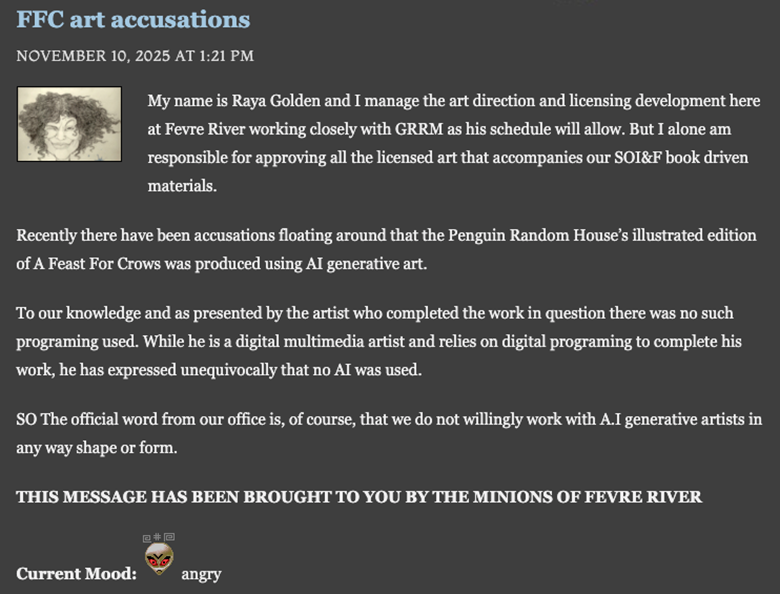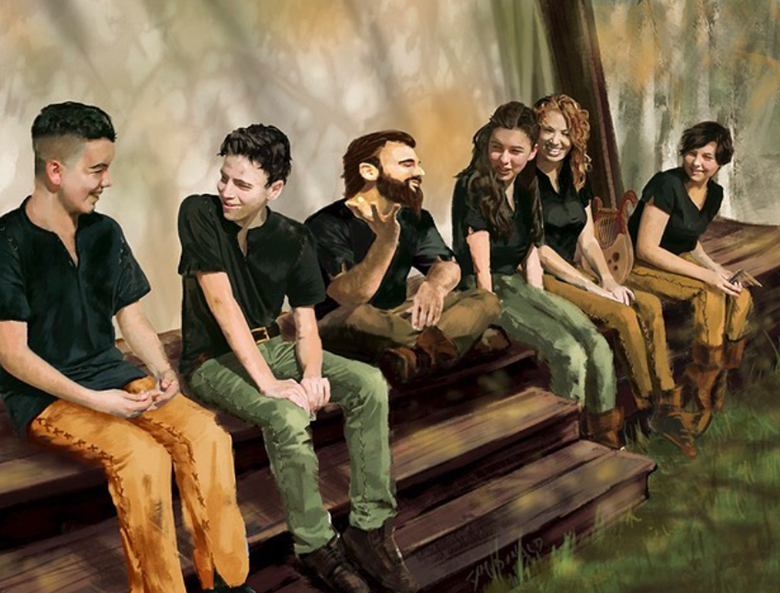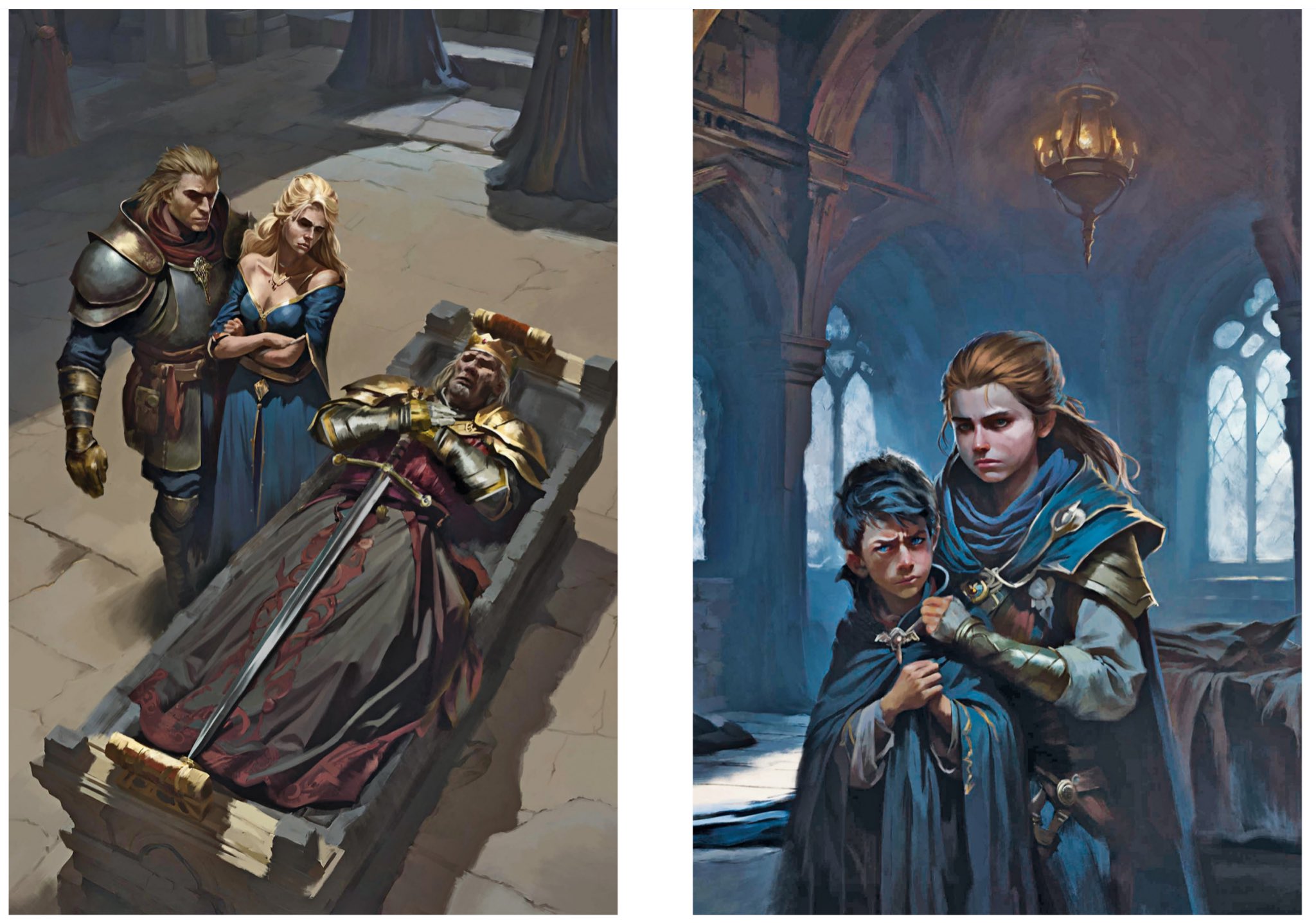How long can you pretend to be a person who draws pictures?
Hey, did you know that people have very strong opinions about AI art?
Well, here is one that will ruffle a few feathers:
You ought to be honest.
Really, this shouldn’t be that difficult, but we must remember that people, in general, are seeking the swiftest and easiest path to status and wealth; scruples happen only when routinely enforced. Of course, that means that artists will try to swindle employers by prompting rather than drawing, and writers will try to sell generated slop to consumers while pretending it came from their special, enlightened brains.
We are very lucky people like Vox Day are actually honest about how they use AI; the overwhelming majority of people who use it will not be, because to admit they use it is to admit they aren’t very special or talented, and those kudos are a major motivating factor in the egos of artistic types, even more than money.
Next on the playlist:
An artist asks Midjourney (or other AI) to do his work for him, and a big publisher either doesn’t realize or doesn’t care until the public at large sees how bad it is. This art is going into a special illustrated edition of George R.R. Martin’s A Feast for Crows:



There are many telltale signs that this is AI, not the least of which is the melting faces (and the presence of a cross in Westeros), but more than that, this art is bad. It’s wild that he didn’t even bother to try to correct the obvious.
But bad art is nothing new. What matters here is that the artist (JM Macdonald) conned the publisher:

I don’t know if this is real or not, but it certainly plays to my experience with the AI dunning-Kruger effect I have described in my videos. Those with low ability to evaluate the quality of real art are also deficient in evaluating or even detecting AI art. Either the publisher wasn’t able to tell or, perhaps even more damning, it is possible the artist could not tell either.
That’s a problem, but the bigger one is that the publisher hired the artist while making a basic and logical assumption that the art he turned in would be…Well, his own work, produced in something of a traditional manner. If you look at the artist’s portfolio, it isn’t great, but it doesn’t look like AI:

It looks photobashed and traced (which is its own controversy – consider Marvel artist Greg Land), but not AI.
So the publisher specifically did not want AI, and the fans, of course, immediately noticed the flaws and, just as important to them, its inaccuracy to the source material.
The artist here is incredibly lazy and dishonest.

[Notice that all these images are using lots of blue – that’s because AI like MidJourney use blue as a neutral shade in fantasy book covers]
However, there is a certain chutzpah to shitting out a few bad prompt images and collecting a paycheck from a publisher. Maybe he really thought nobody would notice, or maybe he just doesn’t care. What we can be sure of, however, is that if he were honest, he would not have gotten the job.
In fact, no artist should, when acting honestly in and with informational symmetry, be able to collect a paycheck ever for using AI.
This is not because AI art is “bad” or “wrong”—it is because it is literally worthless. Now publisher would ever hire an AI artist unless everyone at the firm were retarded, even if the public accepted AI art (they don’t), or even if the public couldn’t tell (they can), you would never, ever hire an artist to make AI art. The entirety of what we’ve seen for this illustrated edition could have been done by an intern in an hour with a handful of credits—so why would you pay extra money for it?
Moreover, the public would not be interested in buying an AI-illustrated edition of the book because they could, at any time, have the robots draw them those images for little or no cost at any time. They don’t need a publisher for that. The people buying this edition of Martin’s book want something like what Jim Kay delivered with Harry Potter – a thoughtful artistic vision of the story.
So, the only way an artist can get paid for AI is by dishonestly exploiting the asymmetry of knowledge that exists, I believe temporarily, in this particular moment in time. That is, there are people willing to pay for art who cannot tell it was AI-generated, and people still willing to trust publishers with their money and who aren’t seeing this unfold on X. Once the asymmetry goes away, so does the market for AI art.
That’s the whole draw of generative AI—anyone can do it. That means that people who jumped at the opportunity to sell low-effort crap to rubes will have to accept that their job is going into the bin as well. AI art is self-democratizing. Anyone can make it. You aren’t special for asking a robot to do something for you.
Knowing this, it’s easy to understand why so many people are dishonest about it.
By the way, I’ve used AI for a few covers back when it was first hitting. Some of them I designed live! But I’ve never pretended I drew them, and I never charged a client for a generated image ever. And the books were really written by me (some live!). But you can tell me your opinion about that below.
I am an independent artist and musician. You can get my books by joining my Patreon, and you can listen to my current music on YouTube or buy my albums at BandCamp.







The crazy thing is how they would have gotten away with it if they had spent good money on professionals, but they either cheaped out or were the victims of a scam. I remember when some of the AI tools came out a year ago and they were better than the slop GRRM put on his cover.
“Those with low ability to evaluate the quality of real art are also deficient in evaluating or even detecting AI art.” This is accurate. They are fully at the mercy of the robot.
I mean, it’s tragic, but I also don’t know how I can teach them to see it.
This is why I prefer older art and literature. But.that said going to need to in a few months when I have the cash order Leper King.
Thank you!
Anytime!
Thank you so much. I often feel like a lone voice, crying out against AI. And so many writers, artists, and other creatives seem to have accepted AI as “just another tool,” something that “can’t be stopped,” something we need to “keep up with China.” Sorry, but all we have to do is PULL THE PLUG.
PULL THE PLUG
LET ME PASS AWAY
PULL THE PLUG
DON’T WANT TO LIVE THIS WAY
We’ll all be speaking Chinese in a few years if we don’t pump trillions of dollars into LLM legal brief writers and deepfake porn makers instead of things that, you know, people want to actually pay for.
That artwork would be decent if the artist had touched it up a bit. MIdjourney even has retouching tools if a pleb lacks Photoshop skills! But it looks like they didn’t even bother. They just crapped it out and took the paycheck. What’s most annoying is that they lied about it and the publisher didn’t notice. LOL! I personally don’t mind AI covers as long as the author is upfront about it. Heck, I’m glad to see books with pretty covers again. Dreary photobashes and crappy Daz3D models had gotten so ugly.
It should not be called art… that’s that laguage game, we seem to lose..
Raya Golden wrote “programing” instead of “AI.” Why? And why can’t she spell?
In general, we should give credit where credit is due. For instance, even if there were no AI, creators of the images we use on Substack should always be credited. I know that a lot of folks leave off attribution not out of some evil motive but because they don’t think about it. Because I taught English for so many years and had to deal with questions of attribution all the time, I’m maybe more sensitive to that than the norm. (I spent a whole day on plagiarism and copyright, reinforced by handouts and an instructional video on plagiarism that I created myself. Students might still do the wrong thing occasionally, but at least they couldn’t say they didn’t know.)
As far as AI art is concerned, to use it effectively, people probably need to spend some time refining with appropriate graphics software. That said, I sympathize with writers who have a small or zero budget but are still going to need a cover. Those of us who can afford to pay for a human designer should. Otherwise, there won’t be any after awhile. (Ironically, that would also be damaging to AI, which needs a constant diet of new material. As more images become AI-generated, AI trains on its own output, which causes degradation.
Part of why I would only engage artists working in physical media for my own books. I also want to be able to buy the originals because I enjoy collecting art.
I have this fear for when I eventually commission a book cover.. how will I know the artist I contract and pay won’t use A.I.? No one would ever know…
There is one artist I know (legitimately skilled in inks and watercolors as well) who regularly illustrates anthologies and book covers with AI images, but the artist (whom I’ll not name) is both very honest and open about it— “Cover art by [Name] using MidJourney” or whatever— *and* puts in the effort and care to get precise, high-quality images from the system and doesn’t send polydactyl putty-faced slop to the publisher, who buys it in full knowledge of the medium used. (It’s not me, in case you wondered.)
For me the issue is the artist’s own honesty or laziness, rather than the medium in which he works. There’s excellent AI art on occasion and high-quality 3D renders from Daz3D models often enough. When the artist’s too lazy to master the tools he uses, he needs to stick to those he HAS mastered and not serve artless (in every sense) slop to those who commission his *work*. And never lie to the customers nor the clients.